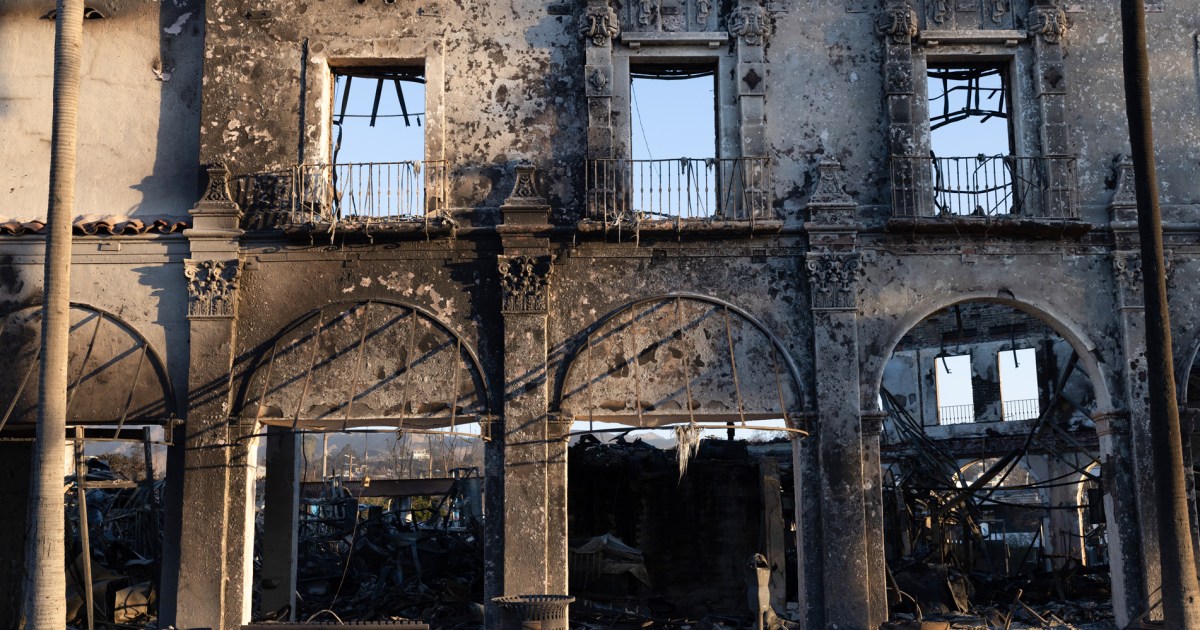Inferno in L.A.: Understanding How Extended Heatwaves Fuel Devastating Wildfires
As the sun blazes down on Los Angeles, the city finds itself grappling with a relentless barrage of wildfires, exacerbated by extreme heatwaves. This weekend’s report delves into the profound causes and far-reaching implications of these catastrophic events. In recent years, the frequency and severity of wildfires in California have surged, leaving communities reeling and the environment devastated. But what drives these infernos? Let’s explore the intricate relationship between extended heatwaves and wildfire outbreaks.
The Underlying Causes of Wildfires in Los Angeles
Wildfires are a natural phenomenon, integral to many ecosystems. However, the frequency and intensity of these fires have escalated, particularly in Southern California. Several factors contribute to this alarming trend, including:
- Climate Change: The shifting climate has created hotter and drier conditions. With global temperatures rising, the summer months have become increasingly unbearable, leading to prolonged heatwaves that dry out vegetation, turning it into tinder.
- Extended Heatwaves: As indicated by the term “extended heatwaves,” these periods of extreme temperatures can last for days or even weeks, creating an environment ripe for fires. During these times, humidity levels plummet, making it easier for flames to ignite and spread.
- Vegetation and Drought: California’s diverse flora, while beautiful, can also be a wildfire’s best friend. During prolonged droughts, native plants become dry and brittle, significantly increasing the likelihood of ignition. The combination of drought and heat makes for a perilous situation.
- Urban Expansion: With Los Angeles continuously expanding, more homes are being built near wildland areas. This urban-wildland interface poses a greater risk, as embers from wildfires can easily travel into residential areas, endangering lives and structures.
The Impact of Extended Heatwaves on Wildfire Behavior
Extended heatwaves play a critical role in not just the ignition of wildfires, but also their spread and intensity. Here’s how these heatwaves influence wildfire behavior:
- Increased Ignition Sources: Heatwaves can lead to increased human activity in natural areas, whether for recreation or land management. This heightened interaction can inadvertently result in more ignition sources, such as campfires, discarded cigarettes, or machinery malfunctions.
- Rapid Fire Spread: During heatwaves, the conditions for rapid fire spread are amplified. High temperatures can lead to more intense fires that move quickly through dry vegetation, making containment efforts significantly more challenging.
- Air Quality Deterioration: Smoke from wildfires severely impacts air quality, leading to health issues for residents. Prolonged heatwaves can exacerbate this issue, as stagnant air allows smoke to linger, affecting larger areas.
The Human Element: Communities at Risk
The consequences of these relentless wildfires extend far beyond the flames. Communities in Los Angeles and surrounding areas face myriad challenges, including:
- Displacement: Thousands of individuals are often forced to evacuate their homes, leaving behind their possessions and memories. The emotional toll can be profound, with many returning to find their homes reduced to ashes.
- Economic Impact: The financial ramifications of wildfires are staggering. From firefighting costs to loss of property and business, the economic burden can take years to recover from. Communities often face increased insurance premiums and a decline in property values.
- Health Risks: Prolonged exposure to smoke and heat can lead to serious health issues, particularly for vulnerable populations such as the elderly or those with pre-existing conditions. Respiratory ailments and heat-related illnesses become more prevalent during these periods.
Mitigation Strategies: What Can Be Done?
As wildfires continue to pose a significant threat, it’s crucial for communities and leaders to adopt proactive measures to mitigate risks. Strategies include:
- Enhanced Fire Management: Implementing controlled burns and creating defensible spaces around homes can reduce fire intensity and slow its spread.
- Community Preparedness: Educating residents about fire risks and evacuation plans is essential. Communities must engage in regular drills and provide resources for emergency preparedness.
- Investment in Infrastructure: Upgrading utilities and power lines can help minimize the risk of accidental ignitions. Additionally, improving access roads for emergency services can enhance response times during wildfires.
- Climate Action: Addressing climate change through sustainable practices and policies will play a vital role in reducing the severity of future heatwaves and, consequently, the likelihood of wildfires.
The Road Ahead: Optimism Amidst the Challenges
While the challenges posed by extended heatwaves and wildfires are significant, there is also a sense of optimism. Communities are increasingly coming together to share resources, knowledge, and support. Local governments are investing in fire prevention programs and infrastructure improvements, fostering resilience amongst their residents.
Moreover, technological advancements in firefighting equipment and early detection systems are paving the way for more effective responses to wildfires. Innovations such as drones for monitoring fire spread and thermal imaging cameras for detecting hotspots are becoming more prevalent, allowing firefighters to act swiftly and decisively.
In conclusion, the inferno in L.A. serves as a stark reminder of the interconnectedness of climate, ecology, and human activity. While extended heatwaves undeniably fuel devastating wildfires, a united approach that emphasizes prevention, community engagement, and innovative solutions can help mitigate their impacts. By fostering resilience and adapting to our changing environment, we can work towards a safer, more sustainable future for all Angelenos.
See more Your Daily Weather



